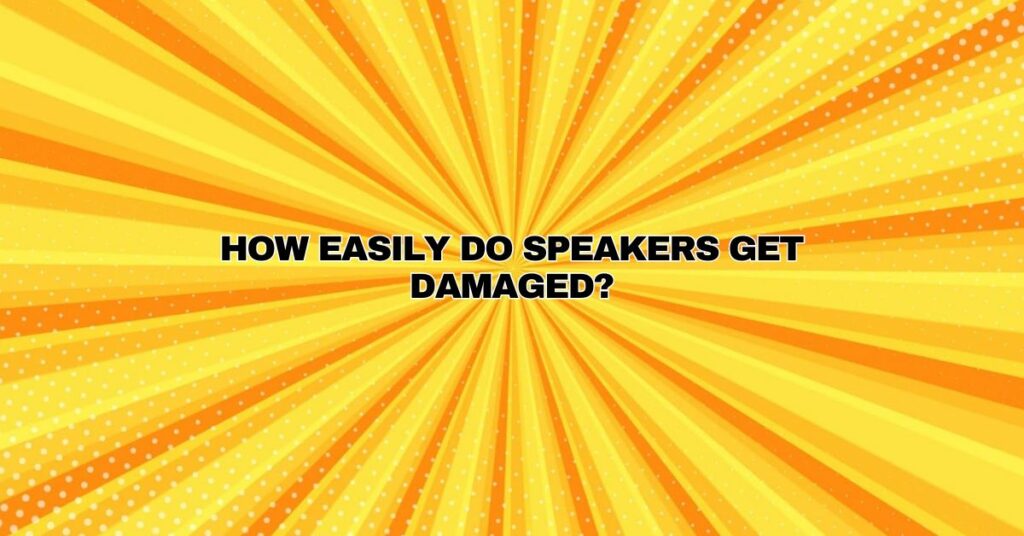Speakers are essential components of audio systems, providing us with the joy of music, the excitement of movies, and the immersion of gaming. However, speakers, like any technology, are not immune to damage. In this comprehensive article, we will explore the various factors that can lead to speaker damage, how to prevent it, and, if damage occurs, how to assess, repair, or replace your speakers.
Understanding Speaker Damage
Speakers can become damaged through various mechanisms, some of which are preventable while others are inevitable with extended use. Understanding these causes is crucial for maintaining speaker health:
1. Overloading
Cause: Overloading occurs when you push a speaker beyond its designed limits, often by playing music at excessively high volumes or sending too much power to the speaker.
Impact: Overloading can result in physical damage to the speaker’s components, such as voice coils and diaphragms. It can lead to distortion, reduced audio quality, and in severe cases, permanent damage.
2. Physical Trauma
Cause: Physical trauma can happen during transportation, installation, or even due to accidents, causing dents, tears, or other physical damage.
Impact: Physical trauma can affect the speaker’s enclosure, diaphragm, or driver alignment, leading to acoustic anomalies and affecting audio quality.
3. Environmental Factors
Cause: Exposure to extreme conditions, such as excessive heat, humidity, or moisture, can damage speaker components over time.
Impact: Environmental factors can degrade speaker materials, reduce longevity, and affect sound quality. For example, humidity can cause cone materials to deform, affecting speaker performance.
4. Electrical Overload
Cause: Sending too much power to a speaker, usually from an amplifier, can result in electrical overload.
Impact: Electrical overload can cause the speaker’s voice coils to overheat, leading to permanent damage or even a complete burnout.
5. Dust and Debris
Cause: Accumulation of dust and debris on or inside speakers can obstruct airflow, causing overheating and affecting diaphragm movement.
Impact: Dust and debris can impede speaker functionality and degrade sound quality. In extreme cases, it can lead to mechanical damage.
Preventing Speaker Damage
Preventing speaker damage is essential for extending their lifespan and maintaining audio quality. Here are steps you can take to protect your speakers:
1. Use High-Quality Audio Equipment
Invest in high-quality amplifiers, receivers, and audio sources to ensure that your speakers receive clean, undistorted signals. This can reduce the risk of electrical overload.
2. Set Safe Volume Levels
Avoid overdriving your speakers by playing audio at reasonable volume levels. Pushing your speakers to the limit can lead to distortion and damage.
3. Protect from Physical Damage
Handle your speakers with care during installation and transportation. Use proper packaging and precautions to prevent physical trauma.
4. Maintain Ideal Conditions
Store and use your speakers in a controlled environment. Keep them away from extreme temperatures, humidity, and moisture.
5. Regular Cleaning
Remove dust and debris from the speaker’s surface and components regularly. Use a soft brush or compressed air to prevent obstruction of airflow.
6. Choose Appropriate Speaker Placement
Position your speakers away from walls or surfaces that can reflect or amplify vibrations. This reduces the risk of environmental factors affecting your speakers.
Assessing and Addressing Damage
Despite preventive measures, speaker damage can still occur. Here’s how to assess and address it:
1. Listen for Changes
If you notice a significant change in sound quality, such as distortion, crackling, or unusual noise, it may be a sign of speaker damage.
2. Inspect Speaker Components
Visually inspect your speakers for any physical damage, such as dents, tears, or misalignment. Check the diaphragms, voice coils, and driver components.
3. Consult an Expert
If you suspect damage but can’t identify the cause or extent, consult a professional speaker technician or audio expert. They can conduct a thorough assessment and recommend repairs or replacements.
4. Repairs or Replacement
Depending on the severity of the damage, your technician may suggest repairs or replacements of damaged components or the entire speaker unit. This can help restore audio quality.
Conclusion
Speakers, while robust audio devices, are susceptible to damage under various circumstances. Understanding the causes of damage and implementing preventive measures are key to preserving their longevity and maintaining audio quality. Regular maintenance, safe volume levels, and careful handling can go a long way in protecting your valuable speakers. If damage does occur, prompt assessment and appropriate action can often restore your speakers to their full potential, ensuring many more years of audio enjoyment.

